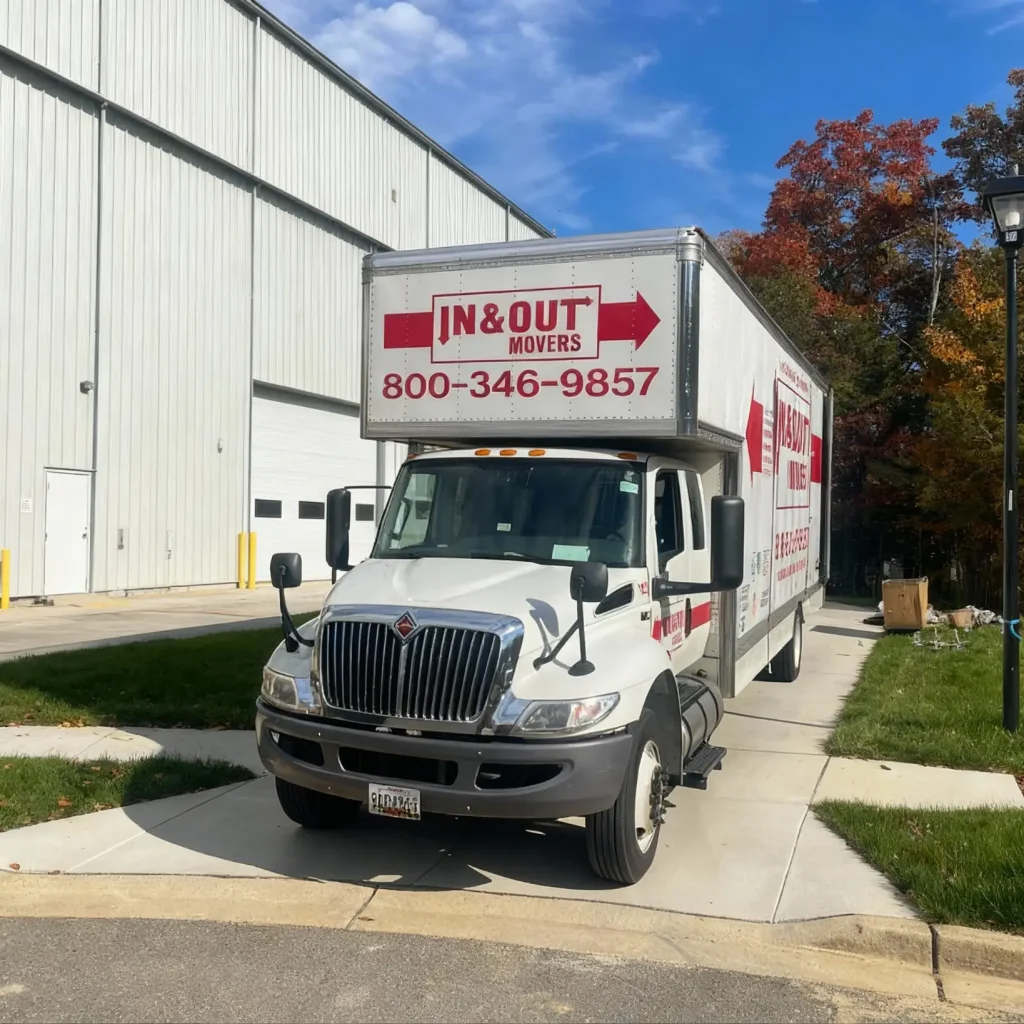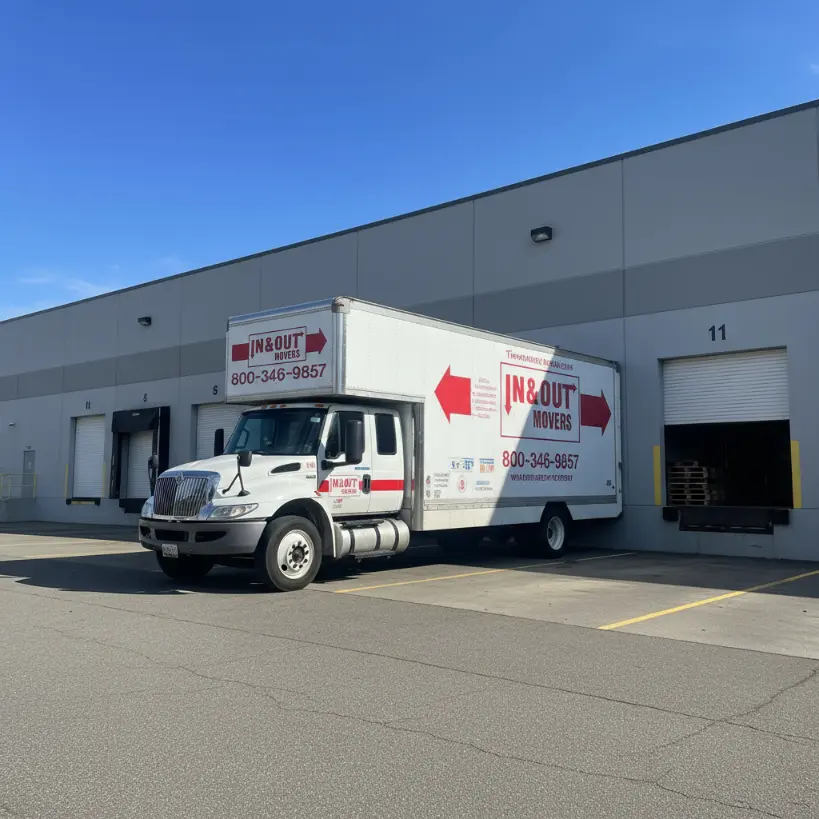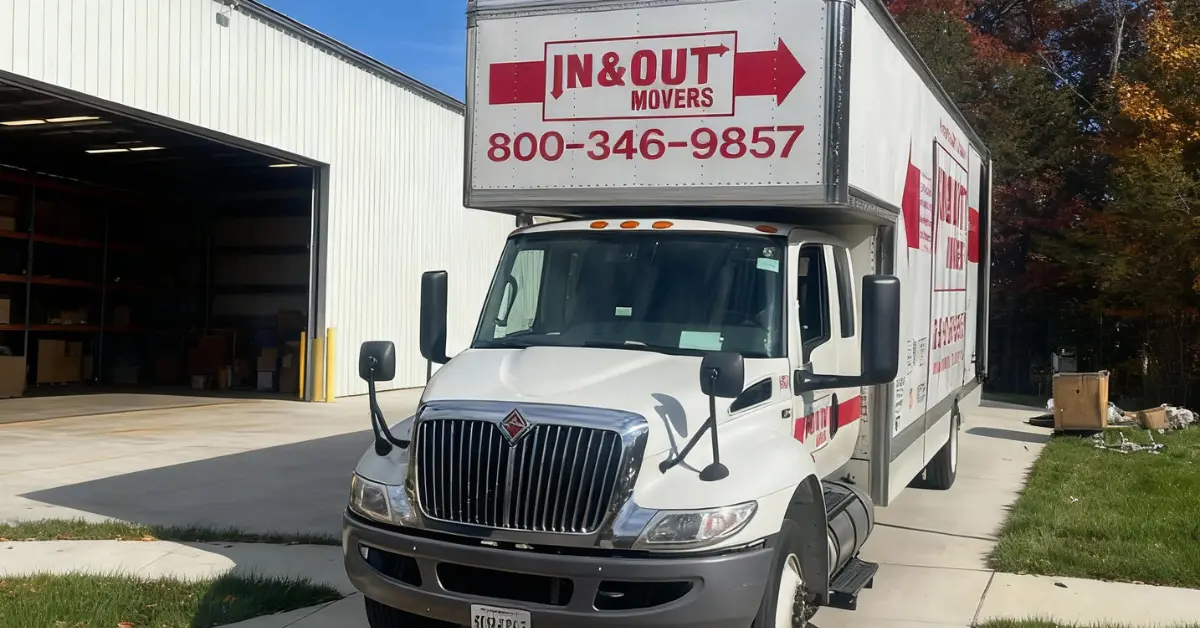The Complete Guide & Checklist for Your Warehouse Relocation
Moving a warehouse isn’t something you do every day. We get it. The process feels overwhelming when you’re staring down thousands of square feet and tons of equipment. Here’s the good news: with the proper preparation, your move can improve your operations. This guide walks you through every step of the warehouse relocation process. We’ll cover timelines, checklists, and strategies that prevent costly mistakes. Whether you’re upgrading to a bigger space or consolidating facilities, you need a solid plan. Let’s break down exactly how to make your move smooth and efficient.
The TL;DR? When you need warehouse relocation services that won’t cause disruptions, call In and Out Movers. Our team ensures that you have a seamless relocation plan, providing a smooth transition from your old place to your new one.
Why A Successful Warehouse Relocation Needs Careful Planning
Most failed moves happen because companies rush the planning phase. You can’t just pack boxes and hope for the best. A warehouse relocation involves coordinating staff, equipment, inventory, and systems to ensure a seamless transition. Everything needs to work together seamlessly. Without proper planning, you’ll face extended downtime and frustrated employees. Every successful warehouse relocation starts with a detailed strategy.
We’ve seen businesses lose thousands in revenue because they underestimated the complexity of their operations. Your customers depend on you to fulfill orders. One day of downtime can damage relationships you spent years building. Thoughtful planning protects your bottom line and keeps operations running smoothly throughout the transition. Warehouse relocation projects demand respect and attention to detail.
Planning Your Warehouse Relocation Timeline
Start your timeline at least six months before moving day. Yes, six months. This gives you breathing room to handle unexpected issues. Begin by identifying your target move date and work backwards. Break the project into monthly milestones that keep everyone accountable and on track. Your warehouse relocation timeline becomes your roadmap for success.
Your first month should focus on selecting your new location and securing the lease. Month two involves creating detailed floor plans and layout designs. By month three, you should be ordering new equipment and scheduling installations. The final three months handle the actual logistics, staff training, and execution phases.
Key Milestones for Moving Your Warehouse
Create specific checkpoints that measure your progress. Two months out, complete your full inventory audit and categorization. Six weeks before moving, finalize all vendor contracts and transportation schedules. One month out, start training staff on new systems and workflows. These milestones prevent last-minute scrambling and keep your team focused and on track.
Each milestone needs a responsible party and a deadline. Assign tasks clearly so nobody assumes someone else is handling critical items. Regular check-ins ensure you catch problems early when they’re still fixable. This structured approach transforms a chaotic process into a manageable project.

Your Essential Warehouse Relocation Checklist
A comprehensive checklist keeps you organized and prevents forgotten tasks. Break your checklist into three phases: pre-move, move day, and post-move. Each phase requires different priorities and resources. We recommend using project management software to track completion rates and dependencies. Every warehouse relocation benefits from documented processes.
Your checklist should include every detail, from updating your business address to testing fire suppression systems. Don’t skip the small stuff. Forgotten permits or missed utility connections can shut down your entire operation. Review your checklist weekly with your project manager to stay on track.
Pre-Move Preparation Steps
Begin by taking a complete inventory of everything in your current facility, documenting serial numbers, conditions, and locations. Decide what moves, what sells, and what gets donated. This decluttering saves money on moving costs and gives you a fresh start. Next, create detailed floor plans for your new space, showing where everything will be placed.
Here’s what your pre-move phase must include:
- Vendor notifications and contract updates
- Staff communication plan and training schedule
- IT infrastructure planning and data backup
- Equipment service and maintenance checks
- Insurance coverage review and updates
Coordinating the Move Day
Move day requires military-level coordination. Station supervisors at both locations are responsible for directing traffic and answering questions. Use color-coded labels that match your floor plan zones. This system helps movers place items correctly the first time. Keep essential supplies readily accessible so you can address minor issues promptly. Proper warehouse relocation execution depends on clear communication.
Communication is everything on moving day. Hold morning briefings to review priorities and assignments. Use radios or messaging apps to stay connected across both facilities. Have backup plans ready for common problems, such as weather delays or equipment breakdowns. Your flexibility determines how smoothly the day unfolds.

Choosing Professional Warehouse Relocation Services vs. DIY
Professional movers bring expertise that saves time and reduces risk. They understand how to handle specialized equipment, such as forklifts and pallet racking systems. Commercial relocation teams carry proper insurance that protects you from liability. Plus, they work fast because they do this every single day. Many warehouse relocation specialists offer turnkey solutions.
However, some companies prefer handling moves internally to control costs. This works if you have a small facility and available staff. You’ll need to rent trucks, purchase packing supplies, and plan for multiple trips. Calculate the actual cost, including staff time and potentially damaged goods. Often, professional services end up being cheaper when you factor in everything.
Setting Up Operations at Your New Warehouse
Don’t expect to hit the ground running on day one. Plan for a gradual ramp-up period while systems stabilize. Start by verifying that all inventory arrived safely and matches your audit records. Test every piece of equipment before resuming normal operations. This includes conveyor systems, dock levelers, and material handling equipment.
Your management system needs configuration in the new space. Update all location codes, bin numbers, and routing information—train staff on any layout changes that affect their daily workflows. Test orders through your entire fulfillment process to identify bottlenecks. Address these issues before customer orders resume. Post-move optimization is crucial for achieving successful warehouse relocation.
Making Your Transition Plan Work
The first few weeks after relocating determine your long-term success. Monitor key performance indicators closely to spot emerging problems. Track order fulfillment times, accuracy rates, and employee productivity. These metrics indicate where additional training or process adjustments are necessary. Stay flexible and make changes quickly when something isn’t working.
Hold daily team meetings during the first month to gather feedback and address any issues that arise. Your staff sees problems you might miss from the office. Celebrate small wins to maintain morale during this adjustment period. Remember, everyone experiences stress during significant life transitions. Support your team through the learning curve, and they’ll help you succeed. Soon enough, your new facility will feel like home.
FAQ
How long does a typical warehouse relocation take from start to finish?
Most warehouse relocation projects take 4-6 months from initial planning to full operational status. Smaller facilities (under 50,000 sq ft) might complete moves in 3-4 months. Larger operations with complex inventory systems often need 6-9 months. The actual physical move typically occurs over one weekend, but preparation and setup significantly extend the timeline. Plan your warehouse relocation well in advance to ensure a smooth process.
What's the biggest mistake companies make during warehouse relocation?
Underestimating the time needed for proper planning. Companies that rush the process face extended downtime and costly errors. We’ve seen businesses skip the inventory audit phase and lose track of thousands in equipment. Another common mistake is failing to communicate clearly with staff, which creates confusion and resistance to change. A rushed warehouse relocation almost always incurs higher costs.
Should I move my warehouse all at once or in phases?
This depends on your business needs. All-at-once moves work best for smaller operations that can afford brief shutdowns. Phased relocations are suitable for larger companies that can’t risk extended downtime. Phased moves cost more but maintain customer service levels. Consider your peak season timing and customer commitments when making your decision. Your warehouse relocation strategy should match your operational requirements.
How much does professional warehouse relocation typically cost?
Costs vary widely based on facility size, distance, and complexity. Expect to pay $5,000 to $15,000 for small warehouses (under 10,000 sq. ft.). Mid-size facilities (10,000-50,000 sq ft) typically cost $15,000-$50,000. Large operations can exceed $100,000 when including equipment installation and system setup. Obtain multiple quotes and verify the services included. Budget appropriately for your warehouse relocation expenses.
Do I need special insurance during a warehouse relocation?
Yes, absolutely. Standard business insurance may not cover items in transit or during temporary storage. Purchase additional commercial moving insurance that covers the full value of your inventory. Verify that professional movers carry adequate liability coverage. Document all items with photos before the move to support any potential claims that may arise. Protect your investment throughout the warehouse relocation process.
How do I minimize downtime during the relocation process?
Start by scheduling your move during your slowest business period. Build inventory buffers before moving so you can fulfill orders from either location, ensuring seamless order fulfillment. Consider maintaining temporary operations at both facilities during the transition. Communicate clearly with customers about potential delays. Most importantly, test all systems thoroughly before resuming full operations. Strategic planning significantly reduces warehouse relocation downtime.




